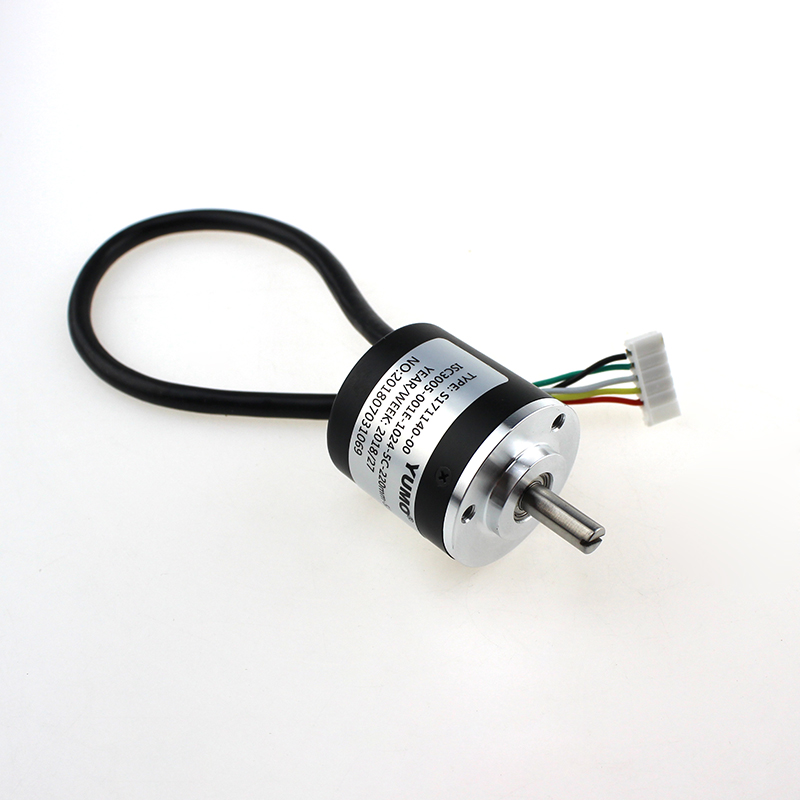How to Choose the Right Rotary Encoder
The process of selecting a rotary encoder depends on several key factors that align with your specific needs. Here's what to keep in mind:
One of the most important specifications when selecting a rotary encoder is the resolution. Resolution refers to the number of distinct positions the encoder can measure in one complete rotation, typically measured in pulses per revolution (PPR). The higher the PPR, the greater the resolution and the finer the detail in position feedback.
Precision is closely related to resolution but also takes into account the accuracy of the signal generated. A highly precise encoder will give exact position information, even in a dynamic or harsh environment.
Tip:
· For high-precision applications like robotic arms, CNC machines, or automated manufacturing processes, choose an encoder with a high PPR (e.g., 10,000 PPR or more).
· For general position monitoring or speed control in less demanding applications, a mid-range resolution (e.g., 1,000 to 5,000 PPR) should be sufficient.
Rotary encoders come in two main types: single-turn and multi-turn. Single-turn encoders measure position within a single rotation (360°), while multi-turn encoders can measure the total number of complete rotations.
Multi-turn encoders are ideal for applications where tracking multiple rotations is essential, such as in large motors, turntables, and wind turbine systems.
Tip:
· If your application requires measuring continuous, multi-revolution positions (e.g., electric motors or rotating equipment), opt for a multi-turn encoder.
· For most other applications, a single-turn encoder will suffice.
The environment in which your encoder will operate plays a crucial role in determining which model to choose. Factors such as temperature extremes, exposure to dust, moisture, or chemicals can impact the performance and longevity of your encoder.
Look for an encoder with a high Ingress Protection (IP) rating if your application is in a harsh or outdoor environment. Encoders with IP65 or IP67 ratings are resistant to dust and water ingress, while those with IP68 are even more rugged, making them suitable for submerged or high-pressure environments.
Tip:
· For industrial environments where dust, dirt, or water exposure is common, select an IP67-rated encoder to protect against debris and moisture.
· If operating in extreme temperatures or harsh chemicals, consider encoders with specific environmental protection features or coatings.
Rotary encoders come with various output types that determine how the generated signals are transmitted to the controller. Common outputs include:
· Open collector (NPN/PNP)
· Differential signals (RS422)
· Analog signals (0-10V or 4-20mA)
Tip:
· Differential output (such as RS422) offers better noise immunity and is suitable for long-distance signal transmission in industrial environments.
· Open collector outputs are typically used in simpler or low-cost applications where noise immunity is not a critical concern.
Ensure that the encoder’s output type matches the input requirements of your control system or PLC.
Encoders come in various shaft types and mounting configurations. The two most common shaft types are:
· Solid shafts: Directly connected to the rotating element.
· Hollow shafts: Allow for more flexible installation, especially when space is limited.
Mounting configurations can include flange mount (where the encoder is secured with screws to the side) or shaft mount (where the encoder’s shaft fits directly into the driving component).
Tip:
· For easy installation, especially if space is constrained, opt for an encoder with a hollow shaft.
· Ensure that the encoder's shaft diameter matches the shaft of the motor or system it's being attached to for optimal alignment.
Once you've selected the appropriate rotary encoder for your application, the next critical step is installation. Proper installation ensures accurate readings and prevents damage to both the encoder and connected equipment.
Incorrect alignment between the encoder and the driving shaft is one of the most common installation issues. Misalignment can cause increased friction, signal errors, and premature wear.
Tip:
· Ensure that the encoder’s shaft is precisely aligned with the shaft of the motor or system it is measuring.
· Use a flexible coupling to accommodate slight misalignments and prevent damage to the encoder shaft.
The encoder must be securely mounted to avoid vibration or movement, which could affect signal accuracy. Depending on the mounting type, ensure that all screws are tight and the encoder is firmly fixed in place.
Tip:
· Use vibration dampeners if the encoder is installed in an environment prone to high vibrations (e.g., motor-driven systems).
· Verify that the mounting screws are not overtightened, as this can cause stress on the encoder’s housing.
Proper wiring is essential for accurate signal transmission. Always double-check that you are using the correct wiring configuration for the encoder's output type (open collector, differential, etc.) and that all connections are secure and insulated.
Tip:
· Use shielded cables for long-distance signal transmission to prevent electrical noise interference.
· Make sure the encoder's power supply meets the required voltage and current specifications to avoid damage.
Once installed, the encoder must be calibrated with the system to ensure that it is accurately measuring the desired position, speed, or direction. This may involve setting the zero position or adjusting the scaling factor, depending on the application.
Tip:
· Use software tools provided by the encoder manufacturer to calibrate and test the encoder’s performance before full integration into the system.
Choosing the right rotary encoder and ensuring its proper installation can dramatically impact the performance and longevity of your automated systems. By considering factors like resolution, environmental suitability, output type, and installation alignment, you can ensure your encoder operates reliably and accurately over time.
At the end, selecting and installing a rotary encoder isn't just about picking a device from a catalog; it's about understanding the application and environment to make an informed choice that will support your system's precision and durability.
This blog-style guide includes technical tips, practical advice, and easy-to-follow steps to ensure that readers understand both the selection process and installation procedures for rotary encoders.
